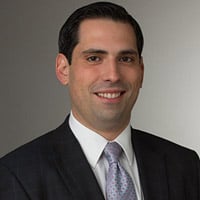
In this series, we provide our readers with two distinct perspectives on the same topic — one from an academic, the other from a practicing financial advisor.
If you have a question or two, please send them to us. Check out the previous column here.
QUESTION: What are the benefits and risks of ESG investing?
THE ADVISOR — JOE ELSASSER, CFP, PRESIDENT, COVISUM:
There are two ways of looking at environmental, social and governance (ESG) investing. The first is a purely capitalist method, in which an investor uses screening criteria to focus their investment dollars in companies that have made commitments to socially ethical businesses. This is a utilitarian argument; the investment returns earned by shareholders measure success.
The second argument for ESG is essentially an a priori argument. In other words, one recognizes their capital has the power to impact society as a whole, and as such, they are simply unwilling to use their capital to help companies that hurt society as a whole. Others are interested in investing primarily in companies that actively benefit society.
There has been terrific debate from both sides of the argument, with economists such as Milton Friedman arguing that incorporating ESG considerations into the management of the business would reduce the bottom line, and several subsequent studies that suggest companies that treat their employees better actually see improved shareholder returns.
Three things control how companies behave:
- Consumers
- The labor force
- Capital
Consumer behavior can have a massive impact on how companies operate. One of the best examples from my youth was the dolphin-free tuna campaign. In 1988, biologist Samuel LaBuddle filmed hundreds of dolphins dying in tuna nets. The footage was enough to shock the public into joining the tuna boycott, and led the largest tuna producing companies to stop poor fishing practices and to create tuna monitoring programs and dolphin-safe labeling.
The dolphin-safe tuna campaign was executed by consumers who directed their purchasing dollars to influence the behavior of companies, but another trend to watch, particularly as the millennial generation comprises a larger percentage of the workforce, is how labor impacts businesses. The boomer generation made a massive impact on how businesses operate and it can be expected that the millennial generation will do the same. Highly skilled workers tend to have a lot of choices in which companies they are willing to work for, and the companies that are able to attract the best talent have a significant advantage over those that don’t. Millennials are driven to work for companies that are socially and environmentally conscious. This is a labor decision akin to an a priori ESG investing decision.
Finally, there are also examples of similar actions being taken from the investment angle. For instance, the disinvestment campaign against South African companies of the early 1980s arguably created the pressure that forced the South African government to end apartheid. As millennials begin to control more capital, we may see a trend towards capital flows into ESG companies or away from socially undesirable companies.
In an a priori approach to ESG investing, there is no comparison of investment returns of ESG companies to non-ESG companies, as there is no willingness to invest in non-ESG companies. When I look to the choices that younger generations are making about where and how to work, and what’s important to them in the companies they are willing to work for, I expect that at least some of their investment decisions will be made the same way.









 June 12, 2018 at 10:24 PM
June 12, 2018 at 10:24 PM













